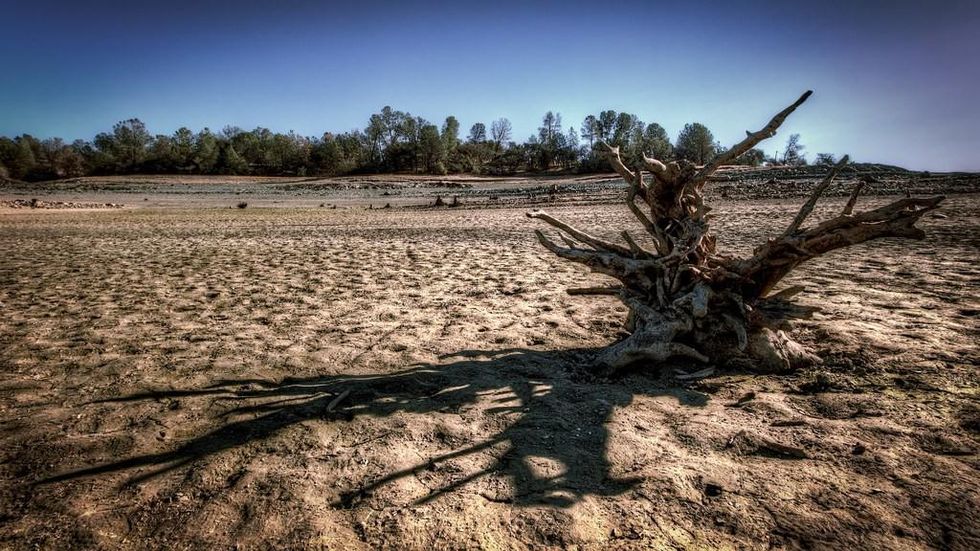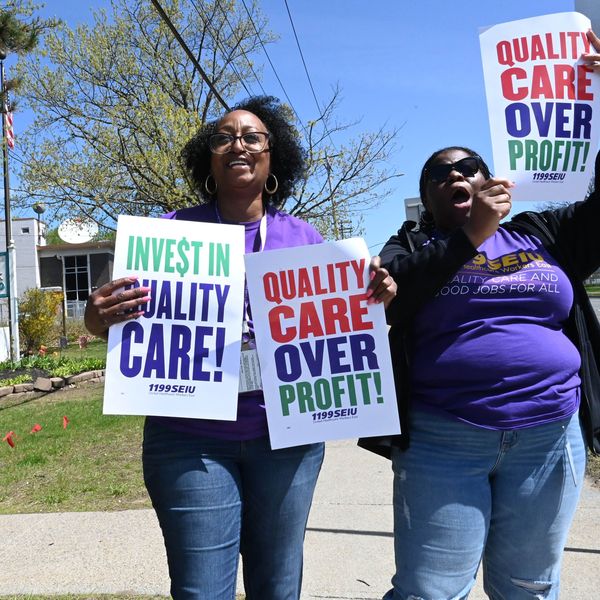Drinking Water for 17 California Communities About to Run Dry?
Warning issued as drought continues to grip the state

The list compiled by the California Department of Public Health comes as a result of Gov. Brown's declaration two weeks ago of a drought State of Emergency.
According to the CDPH, the rural communities on the list range in size from 39 to approximately 11,000 Californians.
The San Jose Mercury News reports that
Most of the affected water districts have so few customers that they can't charge enough money to pay for backup water supplies or repair failing equipment, leaving them more vulnerable to drought than large urban areas.
"As the severe drought continues, we're working with impacted communities to identify alternative water sources and additional resources," CDPH Director Dr. Ron Chapman said.
Where those alternative water resources will be is unclear.
2013 was California's driest year since 1895, according to data complied by NOAA's National Climatic Data Center.
According to the most recent Drought Monitor, almost 99 percent of the state's area is experiencing some level of drought, and over 67 percent of the state is classified as suffering "Extreme" or "Exceptional"drought.
According to meteorologist Jeff Masters, "This is the first time since the Drought Monitor product began in 2000 that a portion of California was put into 'Exceptional Drought,'" a category currently plaguing almost 9 percent of the state.
_________________
An Urgent Message From Our Co-Founder
Dear Common Dreams reader, The U.S. is on a fast track to authoritarianism like nothing I've ever seen. Meanwhile, corporate news outlets are utterly capitulating to Trump, twisting their coverage to avoid drawing his ire while lining up to stuff cash in his pockets. That's why I believe that Common Dreams is doing the best and most consequential reporting that we've ever done. Our small but mighty team is a progressive reporting powerhouse, covering the news every day that the corporate media never will. Our mission has always been simple: To inform. To inspire. And to ignite change for the common good. Now here's the key piece that I want all our readers to understand: None of this would be possible without your financial support. That's not just some fundraising cliche. It's the absolute and literal truth. We don't accept corporate advertising and never will. We don't have a paywall because we don't think people should be blocked from critical news based on their ability to pay. Everything we do is funded by the donations of readers like you. Will you donate now to help power the nonprofit, independent reporting of Common Dreams? Thank you for being a vital member of our community. Together, we can keep independent journalism alive when it’s needed most. - Craig Brown, Co-founder |

The list compiled by the California Department of Public Health comes as a result of Gov. Brown's declaration two weeks ago of a drought State of Emergency.
According to the CDPH, the rural communities on the list range in size from 39 to approximately 11,000 Californians.
The San Jose Mercury News reports that
Most of the affected water districts have so few customers that they can't charge enough money to pay for backup water supplies or repair failing equipment, leaving them more vulnerable to drought than large urban areas.
"As the severe drought continues, we're working with impacted communities to identify alternative water sources and additional resources," CDPH Director Dr. Ron Chapman said.
Where those alternative water resources will be is unclear.
2013 was California's driest year since 1895, according to data complied by NOAA's National Climatic Data Center.
According to the most recent Drought Monitor, almost 99 percent of the state's area is experiencing some level of drought, and over 67 percent of the state is classified as suffering "Extreme" or "Exceptional"drought.
According to meteorologist Jeff Masters, "This is the first time since the Drought Monitor product began in 2000 that a portion of California was put into 'Exceptional Drought,'" a category currently plaguing almost 9 percent of the state.
_________________

The list compiled by the California Department of Public Health comes as a result of Gov. Brown's declaration two weeks ago of a drought State of Emergency.
According to the CDPH, the rural communities on the list range in size from 39 to approximately 11,000 Californians.
The San Jose Mercury News reports that
Most of the affected water districts have so few customers that they can't charge enough money to pay for backup water supplies or repair failing equipment, leaving them more vulnerable to drought than large urban areas.
"As the severe drought continues, we're working with impacted communities to identify alternative water sources and additional resources," CDPH Director Dr. Ron Chapman said.
Where those alternative water resources will be is unclear.
2013 was California's driest year since 1895, according to data complied by NOAA's National Climatic Data Center.
According to the most recent Drought Monitor, almost 99 percent of the state's area is experiencing some level of drought, and over 67 percent of the state is classified as suffering "Extreme" or "Exceptional"drought.
According to meteorologist Jeff Masters, "This is the first time since the Drought Monitor product began in 2000 that a portion of California was put into 'Exceptional Drought,'" a category currently plaguing almost 9 percent of the state.
_________________

